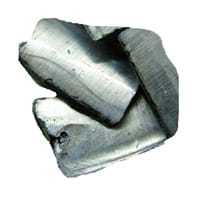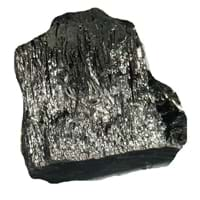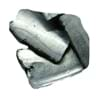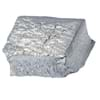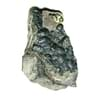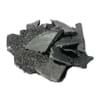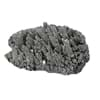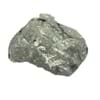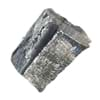Potassium vs Thulium
Periodic Table
Symbol
K
Tm
Group Number
1
17
Not Available
Period Number
4
6
Block
s block
f block
Element Family
Alkali
Lanthanide
CAS Number
7440097
99+
7440304
99+
Space Group Name
Im_ 3m
P63/mmc
Space Group Number
229.00
1
194.00
5
Facts
Interesting Facts
- In the list of most abundant element Potassium is ranked 7th.
- Potassium can easily be sliced (chopped) down using knife.
- Thulium metal can resist corrosion due to dry air .
- Only Tm-169 isotope of Thulium metal occur naturally.
Sources
Found in Minerals, Mining
Found in Minerals, Mining, Ores of Minerals
History
Who Discovered
Humphry Davy
Per Teodor Cleve
Discovery
In 1807
In 1879
Abundance
Abundance In Universe
3 * 10-4 %
9
1 * 10-8 %
30
Abundance In Sun
~0.0004 %
9
~0.00000002 %
28
Abundance In Meteorites
0.07 %
9
0.00 %
99+
Abundance In Earth's Crust
1.50 %
6
0.00 %
99+
Abundance In Oceans
0.04 %
3
0.00 %
99+
Abundance In Humans
0.20 %
2
Not Available
Uses
Uses & Benefits
- Potassium’s compounds are in high demand for their application in Fertilizer manufacturing.
- Potassium carbonate is used in glass manufacturing and Potassium carbonate in manufacturing detergent and body wash.
- Thulium metal produces isotopes that emits X-rays. This isotope is used in X-ray machine.
- Thulium element is also used in Surgical equipment like laser.
Industrial Uses
Ammunition Industry, Chemical Industry
NA
Medical Uses
Pharmaceutical Industry
NA
Other Uses
NA
Alloys, Nuclear Research, Research Purposes
Biological Properties
Toxicity
Toxic
Unknown
Present in Human Body
Yes
No
In Blood
1,620.00 Blood/mg dm-3
2
Not Available
In Bone
2,100.00 p.p.m.
3
Not Available
Physical Properties
Melting Point
63.65 °C
99+
1,545.00 °C
23
Boiling Point
774.00 °C
99+
1,730.00 °C
99+
Appearance
Physical State
Solid
Solid
Color
Silvery Gray
Silvery Gray
Luster
NA
Metallic
Hardness
Mohs Hardness
0.40
23
Not Available
Brinell Hardness
0.36 MPa
99+
471.00 MPa
25
Vickers Hardness
Not Available
520.00 MPa
21
Speed of Sound
2,000.00 m/s
99+
Not Available
Optical Properties
Allotropes
No
No
α Allotropes
Not Available
Not Available
β Allotropes
Not Available
Not Available
γ Allotropes
Not Available
Not Available
Chemical Properties
Chemical Formula
K
Tm
Isotopes
Known Isotopes
20
19
32
7
Electronegativity
Pauling Electronegativity
0.82
99+
1.25
35
Sanderson Electronegativity
0.45
31
Not Available
Allred Rochow Electronegativity
0.91
39
1.11
29
Mulliken-Jaffe Electronegativity
0.73
23
Not Available
Allen Electronegativity
0.73
99+
Not Available
Electropositivity
Pauling Electropositivity
3.18
3
2.75
19
Ionization Energies
1st Energy Level
418.80 kJ/mol
99+
596.70 kJ/mol
99+
2nd Energy Level
3,052.00 kJ/mol
5
1,160.00 kJ/mol
99+
3rd Energy Level
4,420.00 kJ/mol
8
2,285.00 kJ/mol
99+
4th Energy Level
5,877.00 kJ/mol
9
4,120.00 kJ/mol
33
5th Energy Level
7,975.00 kJ/mol
8
Not Available
6th Energy Level
9,590.00 kJ/mol
13
Not Available
7th Energy level
11,343.00 kJ/mol
17
Not Available
8th Energy Level
14,944.00 kJ/mol
13
Not Available
9th Energy Level
16,963.70 kJ/mol
15
Not Available
10th Energy Level
48,610.00 kJ/mol
3
Not Available
11th Energy Level
54,490.00 kJ/mol
4
Not Available
12th Energy Level
60,730.00 kJ/mol
4
Not Available
13th Energy Level
68,950.00 kJ/mol
4
Not Available
14th Energy Level
75,900.00 kJ/mol
5
Not Available
15th Energy Level
83,080.00 kJ/mol
6
Not Available
16th Energy Level
93,400.00 kJ/mol
7
Not Available
17th Energy Level
99,710.00 kJ/mol
8
Not Available
Electrochemical Equivalent
1.46 g/amp-hr
99+
2.10 g/amp-hr
26
Electron Work Function
2.30 eV
99+
Not Available
Other Chemical Properties
Chemical Stability, Flammability, Ionization, Solubility
Ionization, Radioactive Isotopes, Solubility
Atomic Properties
Atomic Number
19
99+
69
99+
Electron Configuration
[Ar] 4s1
[Xe] 4f13 6s2
Crystal Structure
Body Centered Cubic (BCC)
Hexagonal Close Packed (HCP)
Crystal Lattice
BCC-Crystal-Structure-.jpg#100
HCP-Crystal-Structure-of-Thulium.jpg#100
Atom
Number of Protons
19
99+
69
99+
Number of Neutrons
20
99+
100
32
Number of Electrons
19
99+
69
99+
Radius of an Atom
Atomic Radius
227.00 pm
3
176.00 pm
18
Covalent Radius
203.00 pm
9
160.00 pm
30
Van der Waals Radius
275.00 pm
5
Not Available
Atomic Weight
39.10 amu
99+
168.93 amu
99+
Atomic Volume
45.46 cm3/mol
3
18.10 cm3/mol
28
Adjacent Atomic Numbers
Valence Electron Potential
10.40 (-eV)
99+
49.70 (-eV)
28
Lattice Constant
532.80 pm
12
353.75 pm
40
Lattice Angles
π/2, π/2, π/2
π/2, π/2, 2 π/3
Lattice C/A Ratio
Not Available
1.57
17
Mechanical Properties
Density
Density At Room Temperature
0.86 g/cm3
99+
9.32 g/cm3
40
Density When Liquid (at m.p.)
0.83 g/cm3
99+
8.56 g/cm3
24
Tensile Strength
Not Available
Not Available
Viscosity
Not Available
Not Available
Vapor Pressure
Vapor Pressure at 1000 K
Not Available
0.06 (Pa)
10
Elasticity properties
Shear Modulus
1.30 GPa
99+
30.50 GPa
22
Bulk Modulus
3.10 GPa
99+
44.50 GPa
26
Young's Modulus
3.53 GPa
99+
74.00 GPa
27
Poisson Ratio
Not Available
0.21
31
Other Mechanical Properties
NA
Ductile, Malleable
Magnetic Properties
Magnetic Characteristics
Specific Gravity
0.86
99+
9.32
31
Magnetic Ordering
Paramagnetic
Paramagnetic
Electrical Properties
Electrical Property
Conductor
Conductor
Resistivity
72.00 nΩ·m
37
676.00 nΩ·m
5
Electrical Conductivity
0.14 106/cm Ω
14
0.02 106/cm Ω
99+
Electron Affinity
48.40 kJ/mol
22
50.00 kJ/mol
21
Thermal Properties
Specific Heat
0.75 J/(kg K)
6
0.16 J/(kg K)
35
Molar Heat Capacity
29.60 J/mol·K
6
27.03 J/mol·K
22
Thermal Conductivity
102.50 W/m·K
15
16.90 W/m·K
99+
Critical Temperature
2,223.00 K
3
Not Available
Thermal Expansion
83.30 µm/(m·K)
3
13.30 µm/(m·K)
29
Enthalpy
Enthalpy of Vaporization
77.50 kJ/mol
99+
191.00 kJ/mol
99+
Enthalpy of Fusion
2.32 kJ/mol
99+
16.80 kJ/mol
17
Enthalpy of Atomization
89.50 kJ/mol
99+
247.00 kJ/mol
99+
Standard Molar Entropy
64.70 J/mol.K
18
74.00 J/mol.K
9
|
||
|
||
|
